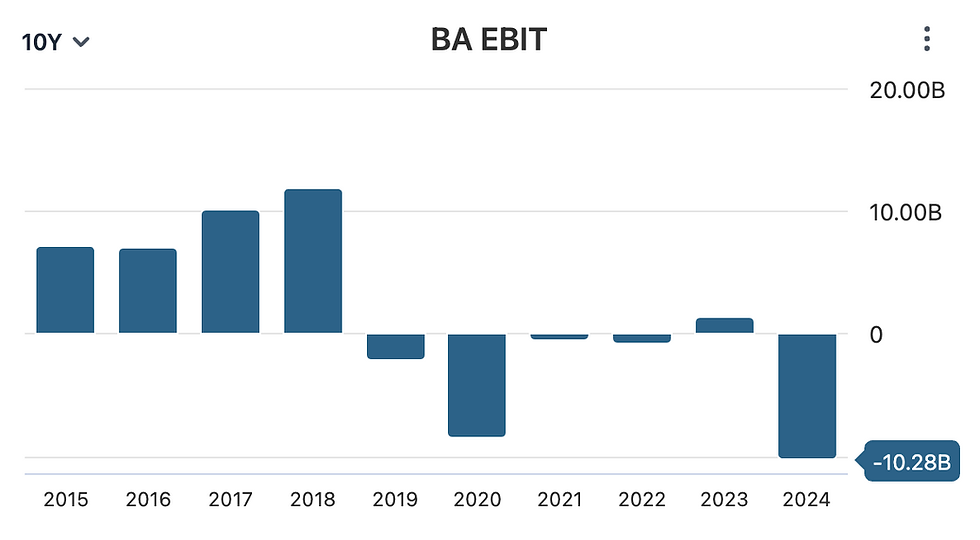Why you ought to avoid investing in companies with Negative Shareholders’ Equity.
- Max Teh
- Nov 10, 2023
- 4 min read
Updated: Feb 22
Table of Contents
Disclaimer: This communication is provided for information purposes only and is not intended as a recommendation or a solicitation to buy, sell or hold any investment product. Readers are solely responsible for their own investment decisions.
Why you should aim to avoid companies with negative shareholders' equity
Shareholders' equity is the difference between a company's assets and liabilities.
It represents the amount of money that belongs to the company's shareholders.
When shareholders' equity is negative, it means that the company owes more money than it owns.
This can be a sign that the company is in financial distress and may not be able to meet its obligations to its creditors. It could be an indication that the company face:
Increased risk of bankruptcy: Companies with negative shareholders' equity are more likely to go bankrupt than companies with positive shareholders' equity. This is because they have less money to cover their debts and expenses.
Difficulty securing financing: Banks and other lenders are less likely to provide loans to companies with negative shareholders' equity. This is because they are seen as a higher risk investment.
Skewed financial ratios: Negative shareholders' equity can skew important financial ratios, such as the debt-to-equity ratio. This can make it difficult to assess the company's financial health.
Examples of companies that have filed for bankruptcy with negative shareholders' equity in the past.
Some well-known companies that have filed for bankruptcy with negative shareholders' equity include:
Lehman Brothers
General Motors
Hertz Global Holdings
Enron
WorldCom
TWA
And in the midst to reduce their operating expenses, they may take on reckless approach such as laying off their employees in a ruthless manner which may have domino effects on other aspects of their business.
Exceptions
However, there may be exceptions, such as
When the company has been repurchasing their shares aggressively.
This happened to Fortinet, when their shareholders' equity stayed negative for 2 years in a row because they have been repurchasing their shares aggressively which is a good sign for investors.
And especially when the companies are "Asset-light", meaning their businesses do not require high amount of Property, Plant & Equipments
examples of these type of Asset light businesses are: Spotify, Netflix & Semrush
hence when they pick up certain amount of debt, their shareholders' equity amount may turn negative.
Benefits of Investing in "Asset-light" Businesses
Scalability: They can grow revenue faster since they don't need heavy investments in physical assets.
Higher Returns on Capital: With lower fixed assets, companies often generate higher returns on assets and invested capital. (For more on profitability, read here.)
Flexibility: Less tied down by expensive infrastructure, these companies can adapt more quickly to market changes.
Methods to identify if a company is "Asset light":
Asset Turnover Ratio [1] you can obtain it in stockanalysis.com > company level > look under Ratios, Benchmark: an Asset Turnover ratio > 1.5 will indicate the company is operating in an "asset-light" business model.

Spotify's Asset Turnover ratio has been > 1.5x in the past. ✅ Revenue divided by P,P,E. [2]
Benchmark, if company's Revenue divided by PPE is > 1000% it is a sign they are operating on an "Asset-light" business model too.
As of 22Feb25, Spotify's Revenue / PPE is 3786% ✅, Netflix's is 1055% ✅ while Disney's is 243% ❌
Boeing Case Study
Here is an example of a company that face the risks mentioned above.
Boeing's shareholders' equity has been negative in the past few years
they are also in a Net debt position in the same duration of time.

their decreasing Asset Turnover ratio

and Rev/ PPE is 497%
both are indication they are operating on an "Asset-heavy" business model.
their EBIT amount has also been decreasing and turned negative, hence resulting in their interest coverage ratio being -3.7x.
Conclusion
If you are considering investing in a company with negative shareholders' equity, it is important to carefully consider the risks involved. You should also research the company's financial history and future prospects to make sure that it is a sound investment.
But for a general rule of thumb, if you would want to save time & adding unnecessary risks to your portfolio I would advice avoiding companies with negative shareholder equity when you are looking for new companies to add to your portfolio.








Comments